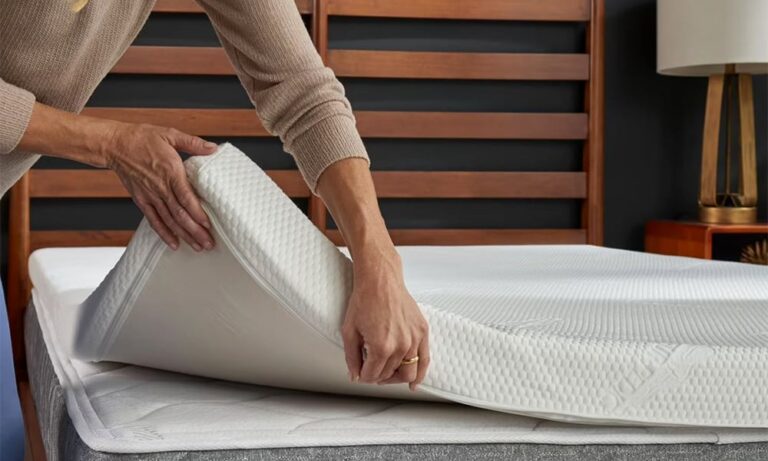Bed mattresses are resilient, cushioned layers of bed on which sleepers lie. It may be where we spend one-third of our lives. Thus, choosing a mattress is crucial but often overlooked. Buying mattresses online or in-store can be overwhelming due to the variety of brands and types available. Each promises a perfect night’s sleep. With so many possibilities, how do you decide where to begin?
Find out about the different types of mattresses below.
Continuous-coil innerspring mattress
Many types of innerspring mattresses are the most popular and cheaper than high-end foam mattresses. There are many manufacturing methods, including continuous coil.
S-shaped coils are formed by interlinking one wire in this mattress. Although affordable and durable, the system transfers motion, which can be annoying for partners, and it can be squeaky if a sleeper tosses and turns.
Marshall Pocket Coil
Marshall (pocketed coils) move independently and are fully encased, providing more support and motion isolation. The mattress’s comfort and quality increase with coil count.
Metal coils can be thinner or thicker and barrel-shaped. Higher coil gauge numbers indicate thinner coils and softer mattresses. Lower coil counts or thicker coils mean a firmer, more durable mattress.
Bonnell Coil Innersprings
These 1800s hourglass-shaped coils form a helix. Bonnell coils are in many mid-range mattresses. These affordable mattresses “sleep cool,” but joint pain sufferers may experience pressure point discomfort.
Offset Coil Innersprings
Offset coils are like Bonnell coils but less squeaky due to flattened top and bottom edges. It created a quiet, durable hinge effect that fits the body.
Polyurethane Polyfoam
As a class, foam mattresses without metal springs are quieter and less likely to transfer motion when tossed and turned. Foam mattresses provide more even pressure point support, making them more comfortable for many people. The main drawback is that foam traps body heat, making it uncomfortable for “sleep cool.”
These pros and cons depend on the foam type and mattress layering.
Polyurethane, also known as polyfoam, is the original petroleum-based foam product. Different densities can be produced. Higher mattress density means more durability and firmer sleep. Polyurethane foam is sometimes used as the inner support layer, with a pillow top or other foam comfort layer.
CertiPUR US certification is recommended for polyfoam mattresses because petroleum contains toxic chemicals. This certification ensures the mattress is formaldehyde, heavy metal, and ozone depleter-free.
Memory Foam
Memory foam is a polyurethane variation with heat-moldable additives. NASA scientists invented memory foam in the mid-1960s, but the first mattress wasn’t released until 1991.
A “memory foam” mattress may contain mostly this kind of augmented polyurethane, but it’s usually only used for the comfort layer around a support layer of polyurethane foam.
Memory foam mattresses conform to your body and rebound when weight is removed. This product offers low motion transfer, soft support, and proper spinal alignment for side sleepers and those with painful bone or muscle conditions.
Many memory foam users find that its density traps body heat and raises sleeper temperature throughout the night. This mattress is ideal for allergy sufferers due to its allergen- and dust-mite-resistant properties.
Latex Foam
Choose a latex foam mattress if synthetic foam bothers you. Rubber tree sap produces latex.
Latex is like memory foam but bounces more and retains less heat. Talalay and Dunlop are latex options. Filling the mattress mould and sucking out air pockets produces talalay latex. So the mattress can be flipped, the latex is frozen to maintain firmness. Dunlop latex is poured into the mould and hardened, creating a softer top and denser bottom mattress.
Gel
Gel mattresses are actually gel-infused memory foam. The gel lowers memory foam density and reduces body heat, keeping the mattress cooler at night.
Gel-infused foam is usually the top comfort layer and polyurethane is the support layer.
Hybrid
Hybrid mattresses combine innerspring support with foam softness. Most hybrids have one to three layers of memory, latex, or gel foam over coils. Many companies make custom hybrids for customers’ sleeping needs.
Pillowtop
Pillowtop or Euro-top mattresses have a layer of padding stitched to the top of a standard mattress. The padding can be foam, wool, or cotton. A pillowtop layer adds comfort and durability to the mattress. Pillowtop mattresses are more expensive and cannot be flipped.
Pillowtops can be added to any mattress, but they’re usually used to soften innerspring mattresses. The added layer is thinner and more compact in the Euro-top version.
Finding a better bed company is crucial for a good night’s sleep. Consider factors such as mattress options, customer service, reputation, and budget when making your decision. With the right bed company, you can rest easy knowing that you’ve made a wise investment in your sleep and overall well-being.

